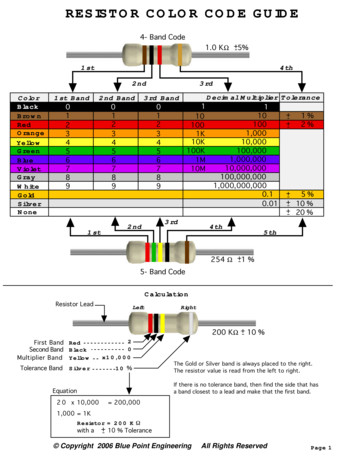Bifunctional Gold Nanorod-loaded Polymeric Microcapsules .
Supplementary Material (ESI) for Journal of Materials ChemistryThis journal is (c) The Royal Society of Chemistry 2011Bifunctional gold nanorod-loaded polymeric microcapsulesfor both contrast-enhanced ultrasound imaging andphotothermal therapy†Hengte Ke, Jinrui Wang, Zhifei Dai,* Yushen Jin, Enze Qu, Zhanwen Xing, Caixin Guo, JibinLiu, and Xiuli YueElectronic Supplementary InformationSupplementary Figures:Figure S1. Size distribution of blank MCs and GNR-MCs by static light scattering-1-
Supplementary Material (ESI) for Journal of Materials ChemistryThis journal is (c) The Royal Society of Chemistry 20112. Experimental Section2.1 MaterialsPoly(lactic acid) (PLA, 80k MW, Shandong Medical Instrumental Institute, China),polyvinyl alcohol (PVA, 86-89% hydrolyzed, low molecular weight, Alfa Aesar) wereusedas received. Poly(allylamine hydrochloride) (PAH, 56k MW), poly(styrenesulfonate) (PSS, 70k MW) and camphor were purchased from Sigma-Aldrich, andhydrogen tetra-chloroaurate (III) hydrate (HAuCl4·4H2O), cetyltrimethylammoniumbromide (CATB), silver nitrate (AgNO3), ascorbic acid and sodium borohydride(NaBH4) were obtained from SinoReagent, China. De-ionized water (DI water, 18.2MΩ·cm) from Milli-Q Gradient System was used in all the preparations.2.2 Preparation of CTAB-Stabilized Gold nanorods (GNRs)GNRs were prepared using a seedless growth method as previously reported [J. Mater.Chem., 2010, 20, 3260-3264]. Briefly, 120 mL AgNO3 (0.1 M) was added to 100 mLaqueous solution containing 0.1 M CTAB and 0.5 mM HAuCl4. Gold reduction wasachieved by adding 0.6 mL ascorbic acid solution (0.1 M) under vigorous stirring.Thirty seconds later, 25 mL NaBH4 solution (2 mM) was quickly injected undervigorous stirring for another 10 s. The solution was then kept still for 40 min. Theresulting nanorods were collected and washed by centrifugation (2-16PK, Sigma) at12,000 rpm for 10 min.2.3 Preparation of PSS-coated GNRs (PSS/GNR)After centrifugation, a pellet of gold nanorods was form at the bottom of the tubes. 8-2-
Supplementary Material (ESI) for Journal of Materials ChemistryThis journal is (c) The Royal Society of Chemistry 2011mL PSS (2 mg/mL in 0.5 M NaCl) was added in and mixed softly for electrostaticadsorption. Fifteen minutes later, the excess PSS were removed by centrifugation at12,000 rpm for 10 min and the obtained PSS/GNR were washed by DI water.2.4 Preparation of PLA microcapsules (MCs)Polymeric microcapsules were prepared by an adapted W/O/W double emulsion solventevaporation process as previously described [Ref. 5-7 of main article]. Briefly, PLA(500 mg) and camphor (50 mg) were dissolved in methylene chloride (20 mL). The firstW/O emulsion was generated by adding DI water (1.0 mL) to the polymer solutionfollowed by continuous probe sonication for 30 s with a 1.27 cm (1/2 inch) diametertitanium alloy horn (Sonicator 4000, Misonix) under 80% output amplitude setting[Ultrasonics, 2006, 44, 360-367]. Then, the first W/O emulsion was poured into a PVAsolution (5% w/v) and homogenized (FJ-200, Jintan Jingbo Experimental Instrument,China) for 5 min at about 9500 rpm. Afterwards, the double W/O/W emulsion waspoured into isopropanol (2% v/v in DI water) with magnetic stirring at roomtemperature for 1 h to make almost all the methylene chloride evaporate off and hardenthe capsules. Then, they were collected by centrifugation (5000 g at 15 C for 5 min,Avanti J-25, Beckman Coulter), washed with DI water, centrifuged again and washedthree times with hexane to further extract the methylene chloride from the polymer.After another washing step by DI water, some of the microcapsules were ready for thedeposition of gold nanorod, and the other capsules were lyophilized ( 54 C, 36 h) byusing a freeze dryer (TFD5505, Ilshin Lab, Korea) to obtain blank PLA microcapsules.-3-
Supplementary Material (ESI) for Journal of Materials ChemistryThis journal is (c) The Royal Society of Chemistry 20112.5 Preparation of gold nanorod-loaded microcapsules (GNR-MCs) usingelectrostactic layer-by-layer self-assembly techniqueGold nanorod-loaded microcapsules were fabricated by electrostatic deposition with thehelp of positively charged PAH as an interlayer due to negative charging of bothmicrocapsules and PSS/GNR. The microcapsule suspension (100 μL) was added in PAHsolution (20 mL, 2 mg/mL in 0.5 M NaCl aqueous solution) in a 50 mL vial, shaken andmixed for about 15 min, then centrifuged at 5000 g for 5 min. The supernatant wasdiscarded and excessive non-adsorbed PAH molecules were washed by DI water for 3times. Then, PSS/GNR solution was added in and the adsorption/centrifuge/wash stepwas repeated to obtain the GNR-MCs.2.6 CharacterizationThe zeta potential of microcapsules during the alternate deposition of PAH andPSS/GNR was calculated from the electrophoretic mobility measured with aBrookhaven ZetaPALS instrument. The morphology of MCs and GNR-MCs wasobserved by FEI Quanta 200 scanning electron microscope. The corresponding energydispersive X-ray spectroscopy of the samples (without gold sputtering process) wasperformed with a liquid nitrogen-cooled Si(Li) detector that was attached to SEM toverify the gold element on microcapsules. Transmission electron microscopic images ofblank MCs and GNR-MCs were acquired by FEI Tecnai G2 Sphera Microscope with aCCD camera operated at 100 kV to confirm the deposition of gold nanorods on themicrocapsules. The UV-visible extinction spectra of GNR, PSS/GNR, MCs and-4-
Supplementary Material (ESI) for Journal of Materials ChemistryThis journal is (c) The Royal Society of Chemistry 2011GNR-MCs were analyzed by a UV- visible spectrophotometer (Varian Cary 4000) witha quartz cuvette of 1 cm optical path length to monitor the fabrication progress. Sizedistributions of MCs and GNR-MCs were analyzed through static light scattering usinga particle size distribution analyzer (Horiba LA-920).2.7 In vitro and in vivo Ultrasound contrast imagingIn vitro ultrasonography of GNR-MCs was carried out in the latex tube (with the innerdiameter of 5 mm) using a broadband linear array L9-3 transducer (9 to 3 MHzextended) of IU22 ultrasound system (Philips Medical Systems). The same self-madesetup was used for in vitro study as described in our previous work [Ref. 15 of mainarticle]. The GNR-MCs were dispersed in 0.9% saline at the concentration of 40 mg/mLand injected to the latex tube stimulating the blood vessel and circulated in the tube by aconstant flow pump in a permanent flow rate. Ultrasonography was performed using theL9-3 transducer in both pulse inverted harmonic imaging (PIHI) mode (MI 0.42) andconventional B-mode at the same time from the longitudinal cross section of the tube.For in vivo study, three rabbits (average weight of 2.4 kg) were anesthetized withpentobarbital sodium (2.0 mL per kg weight, 2% w/v in 0.9% saline) administrationthrough ear vein, and subsequently, heparin sodium (4.0 mL, 0.2% w/v in 0.9% saline)was injected to avoid coagulation. The animals were placed on a warm blanket to keepbody temperature within normal range during the experiment. The GNR-MC suspension(40 mg/mL in 0.9% saline) was intravenously injected at a concentration of 0.1 mL perkg weight through a catheter, flushed with saline (1.0 mL) thereafter. The kidney was-5-
Supplementary Material (ESI) for Journal of Materials ChemistryThis journal is (c) The Royal Society of Chemistry 2011imaged transabdominally using a broadband L9-3 transducer in PIHI mode with MI of0.42. All the digital clips and images were stored for off-line review. All the animalexperiments were approved by institutional animal use committee and carried outethically and humanely.2.8 Photothermal effect of GNR-MCsDI water, blank MCs (1 mg/mL in water), GNR-MC agents (1 mg/mL in water) weresuspended in quartz cuvettes (total volume of 4.0 mL), irradiated by continuous-wavediode NIR laser (T808D2W, Xi’an Minghui Optoelectronic Technology, China) with acenter wavelength of 808 10 nm and output power of 2 W for 10 min. The temperatureof the solutions was measured by a digital thermometer with a thermocouple probeevery 10 s.Photothermal cell toxicity of GNR-MCs was evaluated on HeLa cells (human cervicalcarcinoma cell line). For qualitative analysis, HeLa cells (5 105 cells per well) wereincubated in 6-well plates at 37 C in a humidified atmosphere containing 5% CO2 for24 h. After incubated with GNR-MC suspensions (2.0 mL per well, 1 mg/mL) foranother 1 h, cells were then exposed to NIR laser (10 W/cm2) for 10 min and stainedwith calcein AM (calcein acetoxymethyl ester) to verify the photohyperthermic effecton cancer cells.-6-
Thirty seconds later, 25 mL NaBH4 solution (2 mM) was quickly injected under vigorous stirring for another 10 s. The solution was then kept still for 40 min. The resulting nanorods were collected and washed by centrifugation (2-16PK, Sigma) at 12,000 rpm for 10 min. 2.3 Preparation of PSS-coated GNRs (PSS/GNR)
.56 ohm R56 Green Blue Silver.68 ohm R68 Blue Gray Silver.82 ohm R82 Gray Red Silver 1.0 ohm 1R0 Brown Black Gold 1.1 ohm 1R1 Brown Brown Gold 1.5 ohm 1R5 Brown Green Gold 1.8 ohm 1R8 Gray Gold 2.2 ohm 2R2 Red Red Gold 2.7 ohm 2R7 Red Purple Gold 3.3 ohm 3R3 Orange Orange Gold 3.9 ohm 3R9 Orange White Gold 4.7 ohm 4R7 Yellow Purple Gold 5.6 ohm 5R6 Green Blue Gold 6.8 ohm 6R8 Blue Gray Gold 8 .
Gold 6230 2.1 20 27.5 10.4 Y 125 Gold 6226 2.7 12 19.25 10.4 Y 125 Gold 6152 2.1 22 30 10.4 Y 140 Gold 6140 2.3 18 25 10.4 Y 140 Gold 6130 2.1 16 22 10.4 Y 125 Gold 5220 2.2 18 24.75 10.4 Y 125 Gold 5218R 2.1 20 27.5 10.4 Y 125 Gold 5218 2.3 16 22 10.4 Y 105 Gold 5217 3 8 11 10.4 Y 115 Gold 5215 2.5 10 13.75 10.4 Y 85 Gold 5120 2.2 14 19 10.4 Y .
ZnO nanorod optical disk photocatalytic reactor for photodegradation of methyl orange Yu Lim Chen, 1 Li-Chung Kuo, Min Lun Tseng,2 Hao Ming Chen,1,3 Chih-Kai Chen,3 Hung Ji Huang,4 Ru-Shi Liu,3,5 and Din Ping Tsai1,2,6,* 1Department of Physics, National Taiwan University, Taipei 10617, Taiwan 2Graduate Institute of Applied
Gold Content 24 Karat pure gold (a color that cannot be duplicated) 18 Karat or marked 750 75 percent gold 14 Karat or marked 585 58.5 percent gold 12 Karat or market 500 50 percent gold Unless you have coinage or a wafer or bar of gold, the dealer usually cheats a little on gold content. Many jewelry pieces are gold plated;
2-KARAT (KT or kt) is a measure of fineness of gold. A gold karat is 1/24th part, or 4.1667 percent of the whole. The purity of a gold alloy is expressed as the number of the parts of gold it contains. An object that contains 16 parts gold and 8 parts alloying metal is 16 karat gold. Pure gold is 24 karat gold. HINT: king/karat
Fundamental principles of polymeric materials / Christopher S. Brazel, Stephen L. Rosen. --3rd ed. pages cm Revised edition of: Fundamental principles of polymeric materials / Stephen L. Rosen. 2nd ed. c1993. Includes bibliographical references and index. ISBN 978-0-470-50542-7 1. Polymers. I. Rosen, Stephen L., 1937- II. Rosen, Stephen L .
in Pd-catalyst rejection, a careful selection of the polymeric membrane and solvent, a satisfactory separation, and recovery can be achieved. Keywords: palladium-based catalysts; polymeric membranes; separation; NF/RO membranes 1. Introduction Separation technology has evolved during the 20th century, driven primarily by advances in the
Grade 2 Writing and Language Student At-Home Activity Packet 3 Flip to see the Grade 2 Writing and Language activities included in this packet! This At-Home Activity Packet is organized as a series of journal entries. Each entry has two parts. In part 1, the student writes in response to a prompt. In part 2, the student completes a Language Handbook lesson and practices the skill in the .























